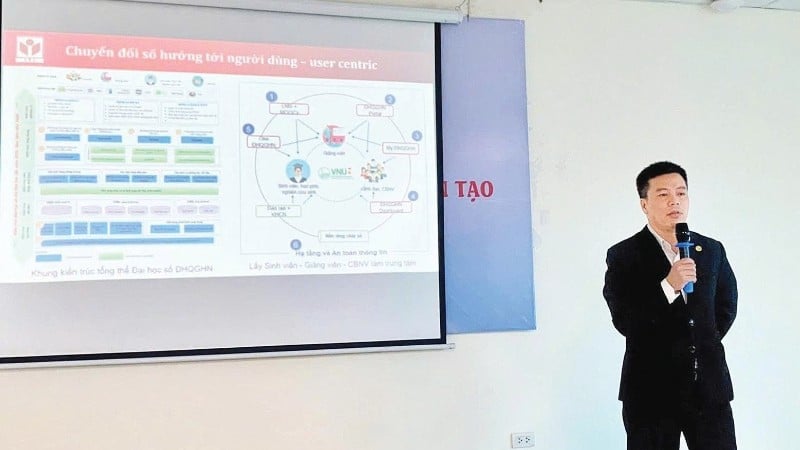
To warn and detect early fraud in cyberspace, there are currently a number of supporting technology products such as chongluadao.vn, a website of the National Cyber Security Monitoring Center (NCSC). This is the address for users to access and check whether the link is malicious or not. The Family Safe application integrates internet access solutions from the provider VNPT . Some warning products from the cybersecurity company CyRadar have been integrated into the warning systems of web browsers.
A completely free application developed by the National Cyber Security Association (NCA) for smartphone users, nTrust helps detect fraud via calls and websites by detecting signs of fraud through checking phone numbers, account numbers, and links. When detecting any signs of fraud, users can send suspicious information to the center via the built-in feature available on the software.
The operating mechanism of these tools is often based on machine learning algorithms, artificial intelligence and the results of synthesizing from domains at risk of spoofing, from the organization and operating mechanism of the link.
Dr. Le Quang Minh, Deputy Director of the Institute of Information Technology, Hanoi National University, said that technology products that support early detection of online fraud are often only considered effective tools for those who know when to use them.
For example, when you sense a risk from a strange link, you will use those tools to check whether the link you are invited to log in contains malicious code or a trap set by a hacker.
Therefore, to a certain extent, this tool is not really popular among ordinary users, although it is still used and constantly updated so that authorities can collect risks, send warnings to users and make recommendations to prevent it on browser windows or from internet service providers themselves.
Using social networking tools, accessing the internet, and interacting in the digital environment are essential needs of people and the risk of losing information security and falling into fraud traps is always present.
To reduce the risk, expert Le Quang Minh noted a few important points. First, account security must be enhanced. Social network accounts such as Facebook, Zalo, Viber, email accounts, and bank accounts must be set up with at least two-factor authentication (2FA). When setting up two-factor authentication, if logging in on a strange device, even if the attacker knows the user's password, the application will still require authentication with an OTP code or a second authentication method, then the user has the opportunity to prevent strangers from changing the password or illegally accessing their account.
Passwords for accounts for mobile applications need to be updated, have a regular password change mode, do not use the same password, passwords must be strong enough to increase security. Users absolutely do not click on strange links, always be aware of attractive invitations, intending to arouse curiosity or receive some reward from an unknown organization or individual.
For computers, phones, and internet access devices, users need to pay attention to updating software regularly and using it correctly to reduce the risk of software vulnerabilities by up to 90%.
According to a survey by the National Cyber Security Association, one in every 220 smartphone users is a victim of online fraud. In 2024, domestic users will lose about VND18,900 billion due to online fraud.
Cyber fraud has been causing a lot of damage to users. According to a survey by the National Cyber Security Association, one in 220 smartphone users is a victim of online fraud. In 2024, domestic users will lose about 18,900 billion VND due to online fraud.
According to the survey, in 2024, only 4.46% of the surveyed people were not bothered by spam calls. Of the remaining 95.54%, 52.96% received an average of several calls per month, and 42.58% received spam calls weekly.
From a professional perspective, expert Minh believes that most forms of fraud in cyberspace today do not have many complex technological elements, but in fact have psychological elements, as well as sophistication in the fraud scenarios.
Some common scenarios often seen by criminals include: Enticing users to participate in fake investment schemes, promising high profits; impersonating agency identities, faking deliveries, scamming with information about winning prizes, big promotions...
Therefore, internet users need to raise awareness of online fraud methods and forms in the digital environment, regularly share and exchange their awareness with those around them to be vigilant and take precautions together.
For authorities, to help people prevent online fraud, the first important thing is to propagate and supplement knowledge and skills for self-protection for people, popularize the risks that although the technology factor is not high, people are still easily deceived when participating and interacting in the digital environment, especially on social networking tools.
Source: https://nhandan.vn/canh-bao-phat-hien-som-lua-dao-tren-khong-gian-mang-post893381.html



































































































Comment (0)